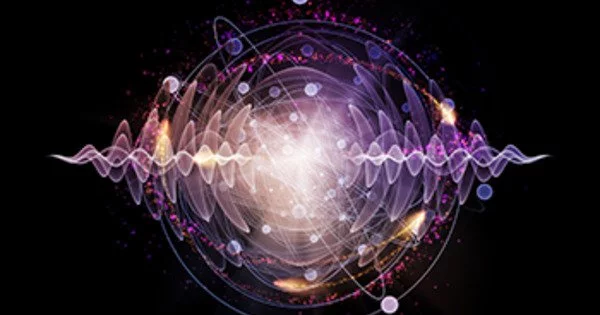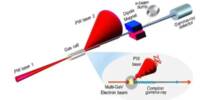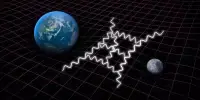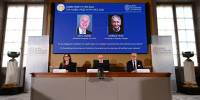The study of the quantum dynamics of classically chaotic systems is known as quantum chaos. Contrary to popular belief, almost all conservative dynamical systems exhibit at least some chaotic behavior in their range of behavior.
Quantum theory and thermodynamics are two seemingly unrelated areas of physics that are linked in subtle ways. How can thermodynamic laws be derived from quantum physics laws? This question has now been investigated using computer simulations, which revealed that chaos plays an important role: Only where chaos reigns do the well-known thermodynamic rules of quantum physics apply.
There is no temperature in a single particle. It has a certain amount of energy or speed, but it cannot be converted into a temperature. A well-defined temperature emerges only when dealing with random velocity distributions of many particles.
How can thermodynamic laws be derived from quantum physics laws? This is a topic that has received increased attention in recent years. This question has now been pursued at TU Wien (Vienna) with computer simulations, which revealed that chaos plays a critical role: only where chaos prevails do the well-known rules of thermodynamics from quantum physics follow.
In quantum physics, the entire system is described by a single large many-particle quantum state. How a random distribution and thus a temperature should arise from this has long been a mystery.
Prof. Joachim Burgdörfer
Boltzmann: Everything is possible, but it may be improbable
The air molecules that are randomly flying around in a room can take on an unimaginable number of different states: each individual particle is allowed to be in different locations and at different speeds. However, not all of these scenarios are equally likely. “Physically, all the energy in this space could be transferred to a single particle, which would then move at extremely high speeds while all the other particles remained stationary,” says Prof. Iva Brezinova of TU Wien’s Institute of Theoretical Physics. “However, this is so unlikely that it will almost never be observed.”
The probabilities of different allowed states can be calculated – according to a formula that the Austrian physicist Ludwig Boltzmann set up according to the rules of classical physics. And from this probability distribution, the temperature can then also be read off: it is only determined for a large number of particles.
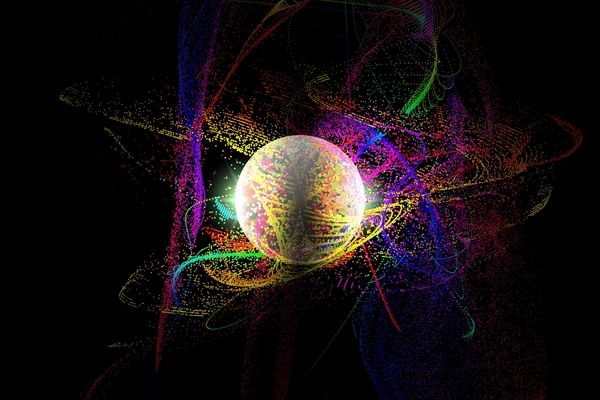
The whole world as a single quantum state
However, this causes problems when dealing with quantum physics. When a large number of quantum particles are in play at the same time, the equations of quantum theory become so complicated that even the best supercomputers in the world have no chance of solving them.
Individual particles in quantum physics cannot be considered independently of one another, as classical billiard balls can. Every billiard ball has its own unique trajectory and location at any given point in time. Quantum particles, on the other hand, lack individuality and can only be described collectively, in the form of a single large quantum wave function.
Prof. Joachim Burgdörfer explains, “In quantum physics, the entire system is described by a single large many-particle quantum state” (TU Wien). “How a random distribution and thus a temperature should arise from this has long been a mystery.”
Chaos theory as a mediator
A team from TU Wien has now demonstrated that chaos is important. To accomplish this, the researchers ran a computer simulation of a quantum system made up of many indistinguishable particles (the “heat bath”) and one of a different type of particle, the “sample particle,” which acts as a thermometer. Each individual quantum wave function in the larger system has a specific energy but no well-defined temperature, just like a single classical particle. However, if you now select a sample particle from the single quantum state and measure its velocity, you can surprisingly find a velocity distribution that corresponds to a temperature that fits the well-established laws of thermodynamics.
“Whether or not it fits depends on chaos – that is what our calculations clearly showed,” says Iva Brezinova. “We can specifically change the interactions between the particles on the computer and thus create either a completely chaotic system, or one that shows no chaos at all — or anything in between.” And in doing so, one finds that the presence of chaos determines whether a quantum state of the sample particle displays a Boltzmann temperature distribution or not.
“Thermodynamic behavior arises from quantum theory without any assumptions about random distributions or thermodynamic rules if the combined system of sample particle and heat bath behaves quantum chaotically. The strength of the chaos determines how well this behavior fits the well-known Boltzmann formulae “Joachim Burgdörfer explains.
This is one of the first times that many-particle computer simulations have rigorously demonstrated the interaction of three important theories: quantum theory, thermodynamics, and chaos theory.
